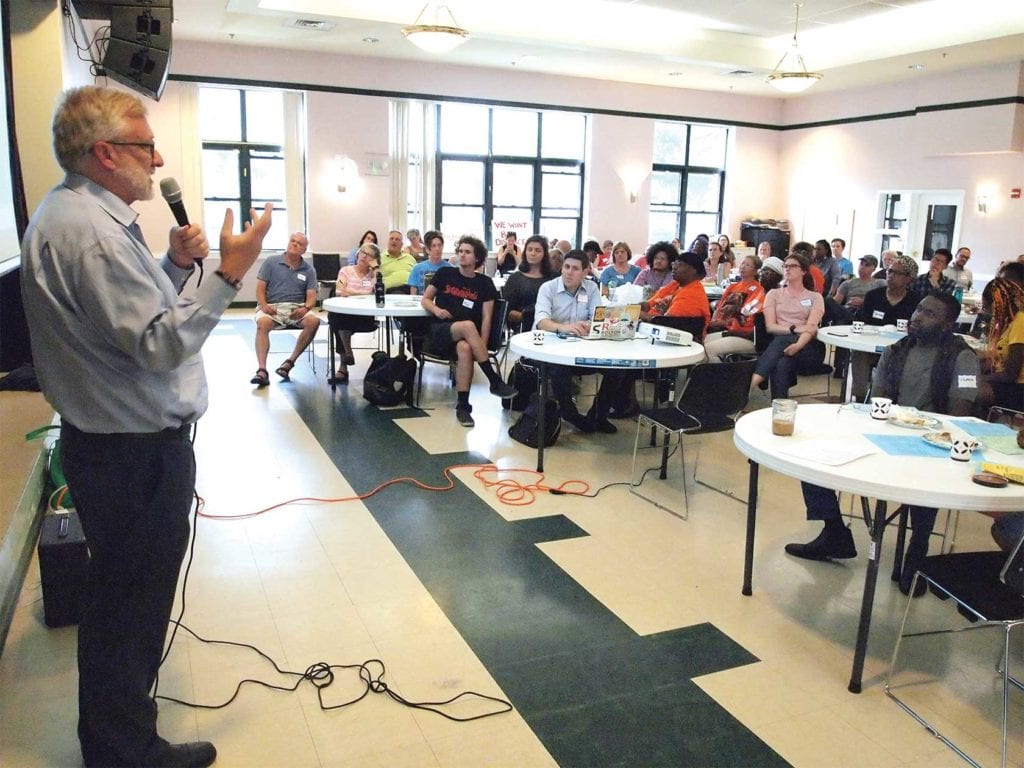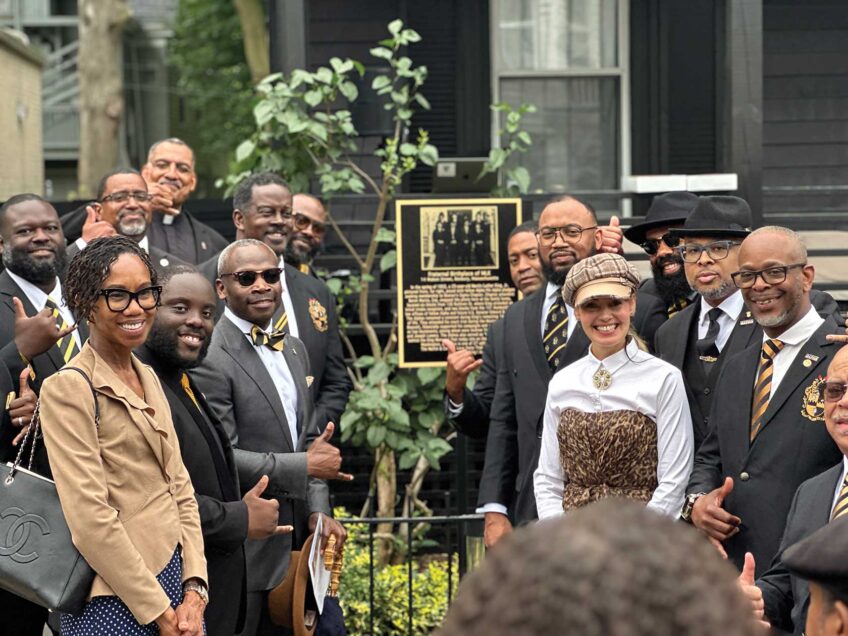
A coalition of affordable housing activists is calling on city officials to increase the percentage of affordable housing units in new construction required under its inclusionary development policy (IDP) from the current 13 percent to 33 percent, to stem what they say is a displacement crisis in Boston.
In addition, the coalition is asking the city to adjust its affordable housing income level from the current average limit of 70 percent of the area median income — $55,550 — to an average of 40 percent of AMI — $31,750 — to better reflect incomes of those currently living in Boston.
Members of the IDP Coalition gathered at the Viet Aid building in Fields Corner last week to discuss their calls for greater affordability. Staff from the Boston Planning and Development Agency (BPDA), which is responsible for the city’s affordable housing policy, presented during the meeting, as did coalition members.
“We know right now the housing being built does not match the incomes people earn in Boston,” said Carolyn Chou, executive director of the Asian American Resource Workshop. “We believe that 33 percent of units should be affordable at an average of 40 percent AMI.”
Chou and other coalition members point out that the incomes in Dorchester, Roxbury, East Boston and other residential Boston neighborhoods are lower than the $65,000 median income in the city.
“We know that right now, the housing being built doesn’t match the incomes people earn in Boston,” she said during the meeting.
The city’s IDP currently requires that developers proposing buildings with 10 or more units set aside 13 percent of the units as affordable. The law applies to any development that requires a zoning variance. Alternatively, developers can choose instead to pay into the city’s affordable housing trust fund, which distributes funding for construction of affordable housing in the city.
Units deemed affordable under the current IDP are rented or sold at rates affordable to those earning up to 120 percent of the area median income. The local AMI of $79,350 is determined by the federal Department of Housing and Urban Development and includes not only Boston, but wealthy cities and towns outside of Boston such as Newton and Cambridge.
District 1 City Councilor Lydia Edwards said the 13 percent requirement “absolutely needs to come up,” but has not met with the IDP Coalition or settled on a percentage.
“I support tenant-led movements because 65 percent of the people in this city are tenants. I’m excited to work with them,” Edwards said.
BPDA’s response
At last week’s meeting, BPDA Housing Policy Manager Tim Davis outlined the city’s efforts to increase the stock of affordable housing under Mayor Martin Walsh’s Boston 2030 housing plan. Davis said the plan calls for the construction of 15,800 income-restricted homes by 2030 as part of the overall goal of 69,000 new units.
The BPDA is currently reviewing the IDP to determine whether the requirements should be increased. Davis said he has held meetings to solicit community input on the IDP in Mattapan, Dorchester and East Boston. He also met with the IDP Coalition in Jamaica Plain.
BPDA officials have also convened housing activists and developers in recent weeks to discuss the idea of increasing the requirement. They have contracted with the consulting firm Landwise Advisors to determine the feasibility of increasing the percentage.
“Our hope is that we can go up,” Davis said. “We’re waiting on the feasibility analysis.”
Davis says he hopes to present recommendations on the IDP after Labor Day.
Addressing a housing crisis
Affordable housing advocates say the city is undergoing a displacement crisis, with remodeled homes and new construction being sold or rented at prices beyond the reach of most Bostonians.
“This issue is so ripe for so many people across the city,” said Kathy Brown, executive director of the Boston Tenant Coalition.
Brown said the groups from across the city that came together to form the IDP Coalition agreed on the 33 percent figure for affordable units in Boston.
Besides BTC and the Asian American Resource Center, the coalition includes community development corporations, the Massachusetts Affordable Housing Alliance, Dorchester Not for Sale and the Chinese Progressive Association.
“It’s a broad cross section of organizations from across the city,” Brown said.







